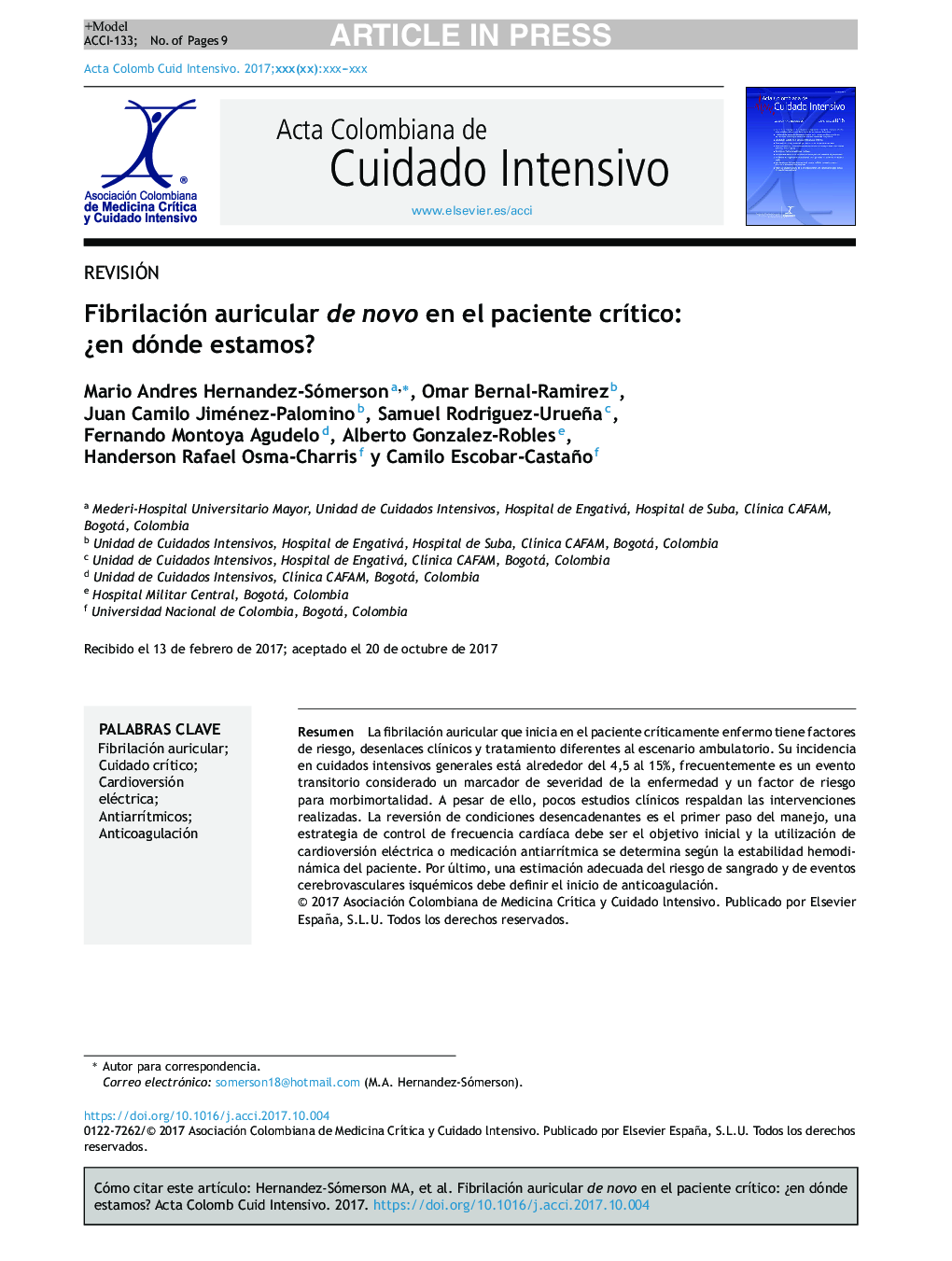| Article ID | Journal | Published Year | Pages | File Type |
|---|---|---|---|---|
| 8694497 | Acta Colombiana de Cuidado Intensivo | 2018 | 9 Pages |
Abstract
New-onset atrial fibrillation in the critically ill patient has different risk factors, clinical outcomes, and treatments than in the outpatient setting. Its incidence in general intensive care is about 4.5% to 15%, and is often a transient event, as well as being considered a marker of the severity and a risk factor for morbidity and mortality. However, few clinical studies support the interventions. Treatment of the triggering cause is its first step of management, an strategy of control the heart rate must be the initial goal, and the use of electrical or pharmacological cardioversion should be determined by the stability of the patient. Finally, an appropriate estimate of the risk of bleeding and stroke should define the start of anticoagulation.
Keywords
Related Topics
Health Sciences
Medicine and Dentistry
Critical Care and Intensive Care Medicine
Authors
Mario Andres Hernandez-Sómerson, Omar Bernal-Ramirez, Juan Camilo Jiménez-Palomino, Samuel Rodriguez-Urueña, Fernando Montoya Agudelo, Alberto Gonzalez-Robles, Handerson Rafael Osma-Charris, Camilo Escobar-Castaño,
